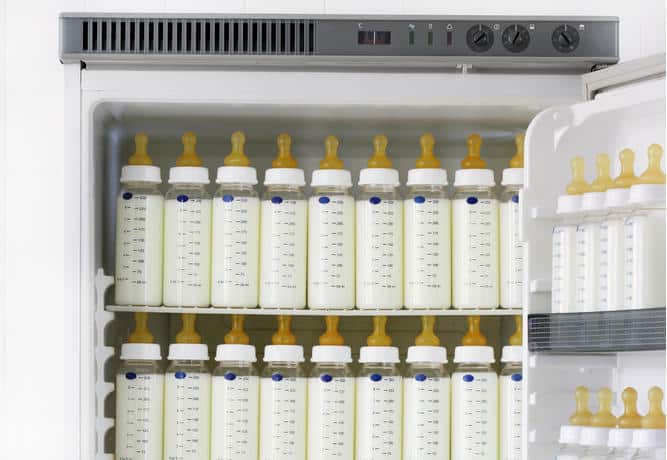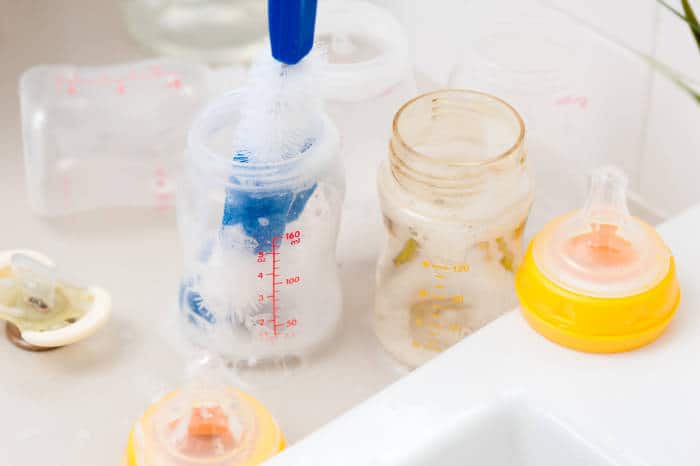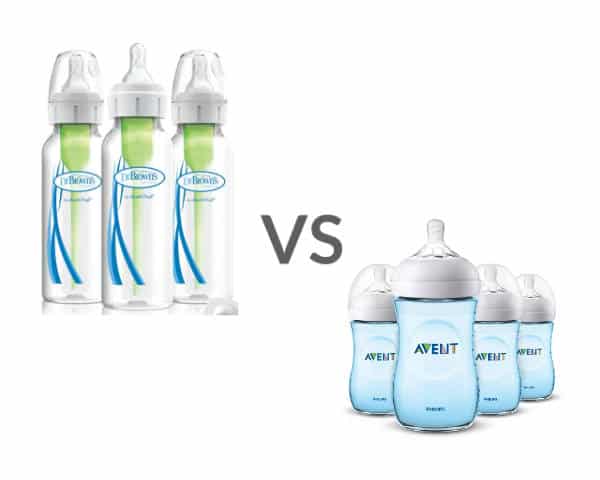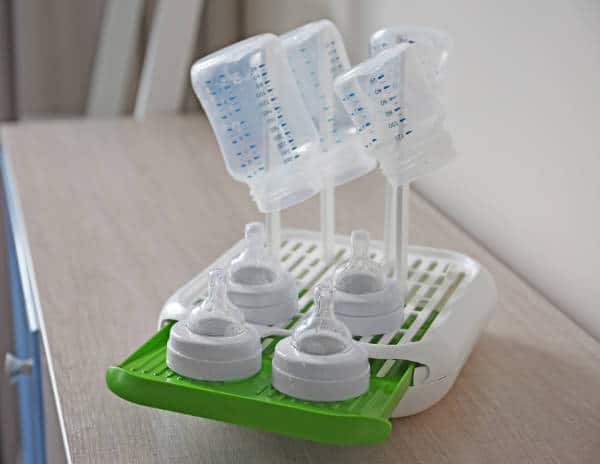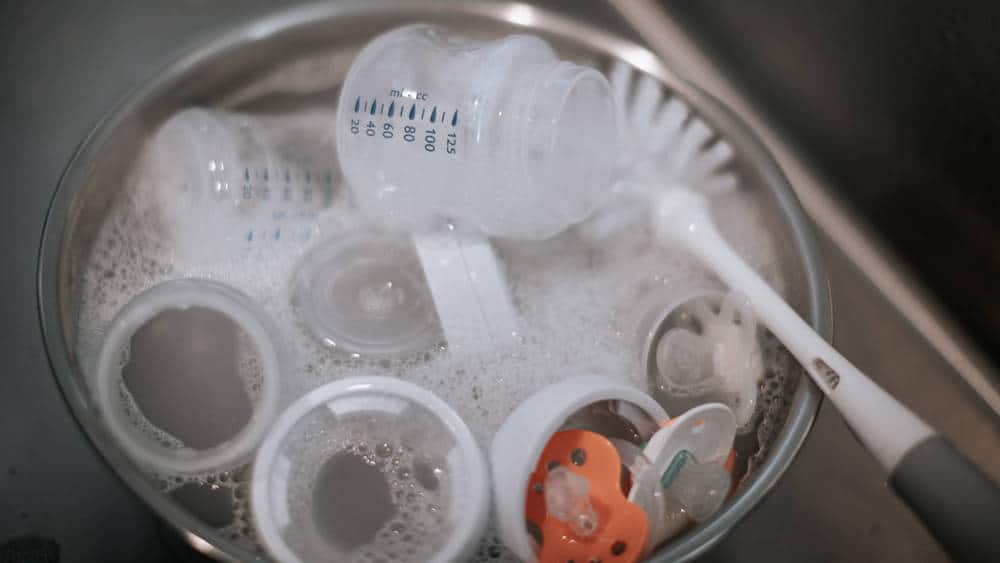Let’s talk about why we may need a breast pump. Don’t we just nurse our babies on a bed of daisies in the forest while baby animals gather around us? That may be the image some moms have planted in their heads before they’re actually presented with the task of nursing.
Breastfeeding is not a linear path, but more a rollercoaster. It’s a bonding experience, but can also be the source of stress for new mothers. Many moms are faced with returning to work within weeks of giving birth and if they wish to continue nursing, they will need to have a reliable breast pump.
Even if you don’t plan on going to work, pumping is useful in building a breast milk stash. One day you may actually want to leave the house without your baby and will need milk for a bottle to hold them over.
If your infant is premature, you’ll want a breast pump to give all the good nourishment while in the NICU. Nothing puts weight on a baby like mom’s milkies. Or, maybe you’ve adopted an infant and would like to induce lactation? Women can do that! It’s amazing stuff, really.
You may have heard of women having a low supply, but some are actually faced with the opposite issue. Those with an oversupply will need a comfortable means to relieve engorgement that can lead to bigger issues such as mastitis.
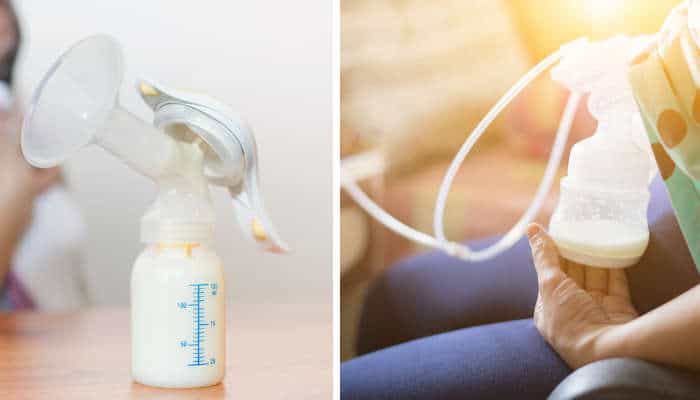
Expressed milk has other uses outside of feeding your baby. Pumped milk is useful for teething, blocked tear ducts, skin irritations, sore/cracked nipples, and mixing with solid food for transitioning babies.
With all of these positive reasons to hang onto some of that liquid gold, it’s a good idea to review the breast pump options and think about which is best for you, manual vs electric…. let’s get into it….
Which is quieter?
Generally, a manual breast pump is quieter but they aren’t completely silent. However, the minimal sound of a manual pump expressing milk is much less than the residual hum of an electric breast pump stimulating milk flow. Some quieter electric options include:
- Spectra S1 Plus Electric Breast Pump
- Medela Sonata mart Double Electric Breast Pump
- Medela Freestyle Electric Breast Pump
The manual pump will always be quieter than a machine with a motor because you are the power behind its suction. It’s a matter of how much you plan on pumping and if you can keep up with minimal hand cramping.
Does an electric breast pump produce more milk?
Again, this is highly individual. As a general rule, for more milk production, you need to express more often. This is why experts recommend nursing on demand when establishing your milk supply.
So, in addition to nursing (or exclusively pumping if that’s your chosen route), you’ll need to pump fairly regularly in order to express more. If you’re attempting to do this with a manual breast pump you will have double the work. Manual pumps are always singles and you have to generate the pumping action using your hand/arm.
Double electric breast pumps are available and therefore, in theory, express more. Electric breast pumps also have settings that stimulate a let down with different speeds and levels of suction that mimic a baby’s feeding patterns. Additionally, you can even find a hands free option in electric breast pumps. These are often secured by a specialized nursing bra. Some of the hands free options clip onto your pants rendering you completely untethered to the wall outlet. Hello multitasking!
It should be said that some women don’t respond to breast pumps in the same way they would for their nursing baby.
Are manual or electric breast pumps easier to clean?
An easy-to-remember mantra, if you’re using a breast pump: “If it touched milk, it must be cleaned and sterilized.” As a rule of thumb, rinse after each use and sanitize once a day, per La Leche League International and the US Center for Disease Control.
The parts that come into contact with milk for both manual and electric pumps are valves, breast shields (or flanges), and milk storage bottles. Electric breast pumps have rubber tubing, whereas manuals do not.
However, tubing does not require cleaning after each use unless it happens to come into contact with milk, which is not how electric breast pumps are designed to work.
However, condensation may develop in the tubing. In which case, run the breast pump for a few minutes allowing the tubing to dry. If you do decide to wash your tubing as regular maintenance, be sure to allow it adequate drying time.
For both manual and electric, some breast pump parts are dishwasher safe for the top rack but reading your manual for your specific breast pump is important. Microwavable sterilizing bags are another great option if you need to be sure your parts are squeaky clean.
Which costs the most?
Electric breast pumps are, without a doubt, more expensive than manual breast pumps. After all, they are to manual breast pumps as dishwashers are to the kitchen sink and a pair of rubber gloves.
Many hospitals give new mothers a manual breast pump during their stay in the hospital, along with support from a lactation consultant to give basic instructions on pumping and breastfeeding. However, that doesn’t mean you have to shell out the big bucks for a top-of-the-line electric breast pump.
Following the Affordable Care Act, many mothers now have the option of obtaining a brand new breast pump for free under most insurance policies. For some, this means contacting your insurance company directly. Another option is using a third-party like Edgepark.
Both routes are relatively painless and simple. Be sure to order in advance as anything with insurance can take time and you’ll want your breast pump at the time of giving birth if you plan on building a milk stash.
Are electric breast pumps more comfortable?
As far as the work required to express milk, electric breast pumps require less manpower. If you need to express milk from both sides, you’re in for one concentrated forearm workout.
The actual suction of the breast pump is highly personal though. In a group of moms, a handful may swear by their electric setup while another group will preach that manual breast pumps are more effective. Both are probably right, for their particular situation. Meanwhile, some women don’t find any breast pump comfortable. It’s easy to feel a bit like a dairy cow as you watch the bottles fill up drop by drop.
Electric breast pumps allow you to turn the suction up or down depending on your personal needs. Additionally, if pumping is painful, there’s a good chance you need to reexamine your breast shields or flanges for a more comfortable fit. This goes for electric or manual! They sell spare parts for a reason after all.
The use of nipple cream and cold/warm compress is also helpful to soothe soreness from the friction of pumping or nursing as well. (Nursing/pumping is hard work and although it is a natural choice, that doesn’t necessarily mean it’s completely painless with rainbows and butterflies. Lactation consultants are great resources to closely examine any discomfort you may be feeling!)
Are manual breast pumps more hygienic?
There isn’t a difference in the hygiene of manual or electric breast pumps as both require the same level of care to maintain hygiene. Manual and electric breast pumps need to be cleaned after each use (all parts that touch milk) and sanitized each day.
Allow parts to dry and store in a clean container. Many breast pump bags come with a wet/dry bag to tote freshly rinsed pump parts to and from work and home.
Remember, rinse anything that touches milk between sessions and sanitize when you get home. The dishwasher and sterilizing bags can be easy solutions for killing germs.
Ultimately, the issue of hygiene comes down to you and not necessarily the type of breast pump. Wash up!
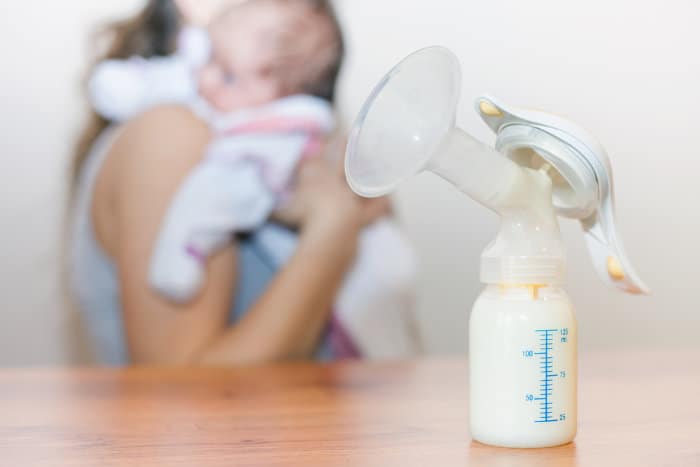
Which is best for travel?
The best answer is, “it depends.” Are you traveling by car? By plane? Hiking through a state park?
Obviously, if you’re going camping off the grid with no access to a power outlet, a manual breast pump is the way to go. On top of the power issue, manual breast pumps are light and fit in almost any bag (as long as you’ve worked out suitable milk storage).
Even on the go, many electric breast pumps can be coupled with a car charger or run from battery power using a portable battery pack. This can be a convenient option for long road trips or even waiting on your first born’s soccer game to wrap up. Use it with a hands free pumping bra, and you can even scroll Instagram while you wait.
In terms of air travel, many airports have popped up with nursing stations or pods that come equipped with wall outlets and comfortable privacy (Yay, no pumping on the bathroom toilet!).
Now, you’ll still have the cooler bag, breast pump parts, and motor to lug around. You’ll need a good breast pump bag. If that doesn’t sound luxurious, a lightweight manual breast pump could be an excellent option for travel. On long flights, a discreet manual may be the easier choice as well.
No matter the choice, many airlines regard breast pumps as medical devices. Therefore, your breast pump bag may not count as a carry-on.
Is an electric or manual breast pump best?
This is highly subjective and depends mostly on your pumping demands. Many mothers never need a breast pump if they’re stay-at-home moms that feed on demand. While others pump here and there to have backup bottles just to get out of the house. Working moms, of course, need to pump multiple times a day in order to maintain a substantial milk supply.
The best breast pump, electric or manual, is reliant on how often you need to pump and how much you expect to express at each pumping session.
The response to each breast pump is also personal. Some women have a better pumping experience with manual breast pumps rather than the electric alternatives. Others don’t respond to breast pumps at all and prefer to hand express when they’re unable to nurse their baby.
Additional pumping equipment
If you’ve never nursed or pumped, you may be surprised to learn that you often have a letdown response on the non-stimulated breast (i.e. a letdown on one side often equals a letdown on the other).
Now, that’s wasted milk that often gets soaked up by a nursing pad or unfortunate favorite T-shirt. That’s where a handy device called the Haakaa (see here for our review) comes in.
It suctions to the breast you aren’t pumping or nursing to collect the wasted milk. You can score ounces on top of ounces just catching the wasted letdown.
There are other milk collection products on the market that fit inside your nursing bra. They’re helpful while nursing and when the rogue letdown hits (hello crying baby in the grocery store). They collect milk, yes, but many don’t provide the suction seal that the Haakaa does.
A minimalist approach to breast milk expression
Suppose you find yourself in a pinch without any of the above-mentioned options. You have breast milk that needs to be expressed. Clogged ducts are no joke and can cause extreme pain.
You may even need to express before allowing your baby to latch. Engorged breasts are harder to latch onto, especially for newborn infants.
Hand expression combined with breast pump use can even lead to better output, per La Leche League. After the breast stops responding to the breast pump, hand expression can be used to release any remaining breast milk.
To practice hand expression, it’s recommended to wash hands first. Hygiene is still a priority! A wide-mouth container is advised to catch the milk.
Form a “C” shape around your breast with your hands, using your thumb and fingers to massage the breast in a downward motion towards the nipple. Concentrated massage is usually encouraged by lactation consultants and doulas as it is helpful in breaking up clogged ducts.



